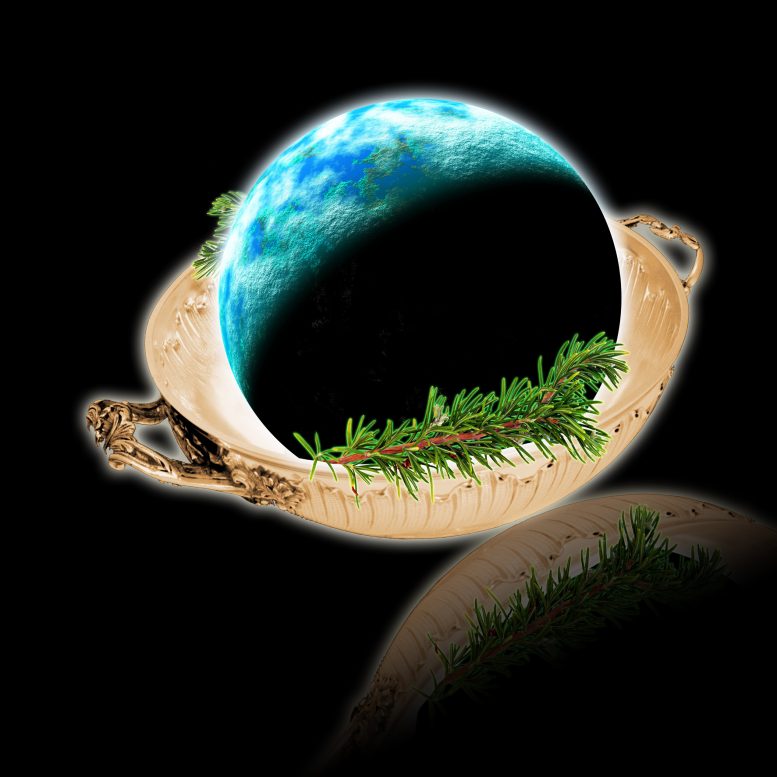
Astronomers discovered evidence that rocky exoplanets share common basic ingredients. Credit: David A. Aguilar (CfA)
Using the High-Accuracy Radial velocity Planet Searcher (HARPS), astronomers show that the recipe for Earth also applies to terrestrial exoplanets orbiting distant stars.
How do you make an Earth-like planet? The “test kitchen” of Earth has given us a detailed recipe, but it wasn’t clear whether other planetary systems would follow the same formula. Now, astronomers have found evidence that the recipe for Earth also applies to terrestrial exoplanets orbiting distant stars.
“Our solar system is not as unique as we might have thought,” says lead author Courtney Dressing of the Harvard-Smithsonian Center for Astrophysics (CfA). “It looks like rocky exoplanets use the same basic ingredients.”
Dressing presented the research today in a press conference at a meeting of the American Astronomical Society.
The key to the discovery was the HARPS-North instrument on the 3.6-meter Telescopio Nazionale Galileo in the Canary Islands. (HARPS stands for High-Accuracy Radial velocity Planet Searcher.) It is designed to accurately measure the masses of small, Earth-sized worlds. Those measurements are crucial to determine densities and therefore compositions.
“Our strategy for using HARPS-North over the past year has been to focus on planets less than two times the diameter of Earth and to study a few planets really well,” explains Harvard astronomer David Charbonneau (CfA), who currently heads up the HARPS-North Science Team.
Most recently the team targeted Kepler-93b, a planet 1.5 times the size of Earth in a tight, 4.7-day orbit around its star. The mass and composition of this world were uncertain. HARPS-North nailed the mass at 4.02 times Earth, meaning that the planet has a rocky composition.
The researchers then compared all ten known exoplanets with a diameter less than 2.7 times Earth’s that had accurately measured masses. They found that the five planets with diameters smaller than 1.6 times Earth showed a tight relationship between mass and size. Moreover, Venus and Earth fit onto the same line, suggesting that all these worlds have similar rock-iron compositions.
As for the larger and more massive exoplanets, their densities proved to be significantly lower, meaning that they include a large fraction of water or other volatiles, hydrogen and/or helium. They also showed more diverse compositions rather than fitting into a single group like the smaller terrestrial worlds.
The team also noted that not all planets less than six times the mass of Earth are rocky. Some low-mass worlds with very low densities are known (such as the planets in the Kepler-11 system). But for typical close-in small planets, the chances are high that they share an Earth-like composition.
“To find a truly Earth-like world, we should focus on planets less than 1.6 times the size of Earth, because those are the rocky worlds,” recommends Dressing.
The paper presenting this work has been accepted for publication in The Astrophysical Journal.
Reference: “The Mass of Kepler-93b and The Composition of Terrestrial Planets” by Courtney D. Dressing, David Charbonneau, Xavier Dumusque, Sara Gettel, Francesco Pepe, Andrew Collier Cameron, David W. Latham, Emilio Molinari, Stephane Udry, Laura Affer, Aldo S. Bonomo, Lars A. Buchhave, Rosario Cosentino, Pedro Figueira, Aldo F. M. Fiorenzano, Avet Harutyunyan, Raphaelle D. Haywood, John Asher Johnson, Mercedes Lopez-Morales, Christophe Lovis, Luca Malavolta, Michel Mayor, Giusi Micela, Fatemeh Motalebi, Valerio Nascimbeni, David F. Phillips, Giampaolo Piotto, Don Pollacco, Didier Queloz, Ken Rice, Dimitar Sasselov, Damien Segransan, Alessandro Sozzetti, Andrew Szentgyorgyi and Chris Watson, 20 February 2015, The Astrophysical Journal.
DOI: 10.1088/0004-637X/800/2/135
Headquartered in Cambridge, Massachusetts, the Harvard-Smithsonian Center for Astrophysics (CfA) is a joint collaboration between the Smithsonian Astrophysical Observatory and the Harvard College Observatory. CfA scientists, organized into six research divisions, study the origin, evolution and ultimate fate of the universe.


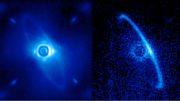
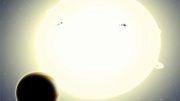


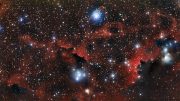
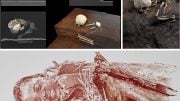

Be the first to comment on "HARPS-N Spectrograph Reveals the Composition of Terrestrial Planets"